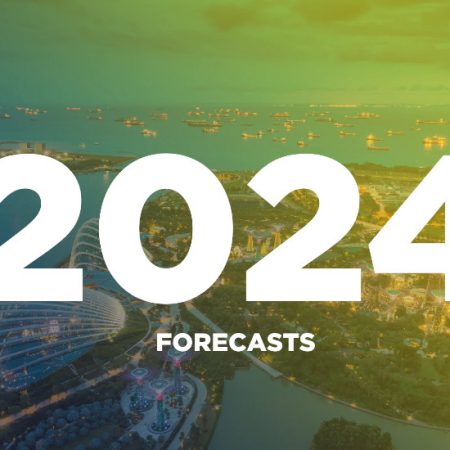Investment outlook
We expect a gradual resurgence in property investment in the Asia Pacific region this year, driven by a clearer outlook on interest rates and more attractive prices.
Alternative assets are gaining in popularity across the region but especially in India, where a strong emphasis on manufacturing, alongside accelerating digitalisation, is expected to attract significant global equity inflow. The chief beneficiaries are likely to be data centres, warehousing and logistics and life sciences. Shared spaces, such as co-living and flexible office space, should also have a strong year.
In fact, the undersupply of data centres in the Asia Pacific region is becoming a key investment theme, spurred by the rising demand for e-commerce, 5G networks and artificial intelligence (AI). The growth of AI, driving the need for larger data centres, will create opportunities in lower-cost regions.
The living sectors – including multifamily rental, student housing, senior housing and co-living – will also offer scalable opportunities to investors. Rental accommodation in Australia and Japan will be one of the key markets to flourish in the coming year. Elsewhere, rising ageing populations in developed markets should support the growth of senior housing, while growing student numbers in India and south-east Asia will support demand for student housing.
In China, interest from investors and developers in the multifamily market is on the rise. This is due to improvements in economies of scale, a sluggish residential sales market and government support for the rental sector.
The warehousing and logistics sector remains in robust health across the region, driven by a manufacturing and e-commerce expansion and the thriving semiconductor industry in locations like Taiwan. Meanwhile, Vietnam looks set to benefit from the drive to diversify manufacturing and supply chains.
With offices, investors will focus on markets where there is thriving occupier demand and spaces that offer a green premium. Brown-to-green retrofits are set to become more important in Asia Pacific, as they are elsewhere. A combination of tenant demand and regulation is driving asset owners to bring buildings up to higher environmental standards via retrofitting and refurbishment.
Rents outlook
Rents across the Asia Pacific region will be influenced by localised economic challenges and market dynamics in 2024.
In Hong Kong, the confluence of higher interest rates and economic headwinds is expected to drive office rents down. On the brighter side, retail is beginning to recover in the city. Prime high street rents in Singapore will also be buoyant, underpinned by tourist demand. Growing demand for industrial and logistics space will contribute to the resilience of rental values across the region.
The residential sector – characterised by sustained demand for rental housing – is expected to see continued growth. In Australia, low vacancy rates are driving up rents. Japan’s multifamily residential market shows solid growth, with steady demand from renters and investors. However, challenges related to affordability in a number of markets may be a medium-term consideration for investors in this sector.
Yields outlook
The expected reduction in central bank rates is likely to stabilise yields in Asia Pacific by the middle of the year, with downward pressure on prime yields in some markets.
Logistics yields are expected to remain stable, driven by strong mid-term fundamentals.
Yields in the living sectors – including multifamily residential, student housing and senior housing – will remain stable.
Green building certification and sustainable practices will play a significant role in influencing office yields, with occupier flight to quality supporting prime office values.
Savills top picks for Asia Pacific, 2024
- Prime industrial/logistics markets (Singapore, Japan, South Korea, Australia, India)
- Prime offices with stable income in CBD locations (Taiwan, South Korea, Australia, India, Vietnam, China, Japan)
- Prime multifamily assets (Japan)
- Prime hotels (Australia, South Korea)
- Prime retail (Singapore, Vietnam)
- Industrial assets with reversionary potential (Australia, South Korea)
- Regional retail (Singapore, China, Vietnam, Japan)
- Brown-to-green office retrofitting (Singapore, South Korea, Japan, Taiwan, Australia)
- Data centres (India, Australia)
- Life sciences, education (China, India, Vietnam)
- New development (India, South Korea)
- Cold storage (Vietnam, Hong Kong)
- Office conversions to residential (South Korea, Australia)


